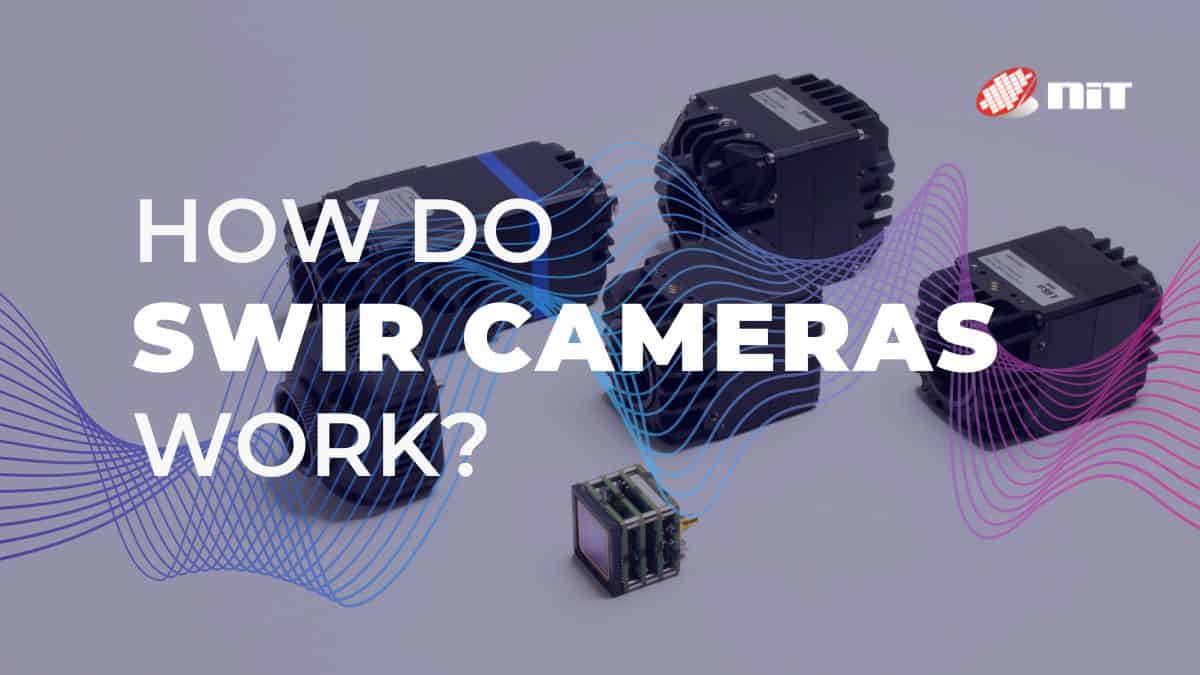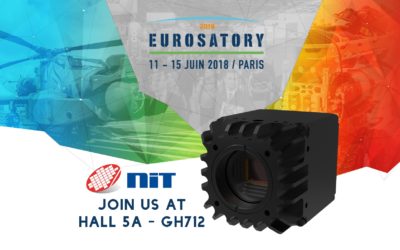Short-Wave Infrared (SWIR) cameras have become essential imaging tools across agriculture, defense, industrial and medical industries. These cameras utilize SWIR light in the wavelength range of 0.9-2.5 µm, which is invisible to the naked eye, to produce high-resolution images. One of the primary benefits of SWIR imaging techniques is that they can take images through materials that are opaque to certain wavelengths of visible light – materials like glass or polymers, a benefit often unmatched by other technologies. This blog post will provide an overview of how SWIR cameras work and their primary applications.
How do SWIR Cameras Work?
SWIR cameras use sensors to detect the reflection and emission of light in the SWIR wavelength range, which is between 0.9 and 2.5 µm. These cameras consist of a sensor, a lens, a photodiode array, and a conversion system, each playing an important role in detecting light and converting it into an electronic signal.
Sensors used in SWIR cameras are built with a photodiode array, often using InGaAs materials (indium gallium arsenide) which has a bandgap energy smaller than silicon, allowing it to absorb photons with a longer wavelength. When light in the SWIR range passes through the camera lens, it is focused onto the sensor. This sensor consists of multiple pixels arranged in a grid pattern. Each pixel detects the intensity of incoming light and corresponds to a specific location in the image.
When the light impinges onto the photodiode array, it creates a charge that is proportional to light intensity. This charge is then converted to a digital signal which is translated via the SWIR camera’s electronics into an image. Generally, the image is grayscale, with each pixel corresponding to a different shade of gray that represents light intensity at that location.
InGaAs is not the only material used in SWIR sensors, but InGaAs offers a broader range of SWIR wavelengths and can be used in gas and environmental monitoring applications.
One of the reasons SWIR cameras are so popular is that they work effectively in low-light conditions, which is suitable for a range of applications such as agriculture, semiconductor inspection, medical imaging, surveillance, and security. In addition, utilizing InGaAs in photodiode arrays offers high sensitivity and resolution to light in the SWIR range.
Advantages of SWIR Cameras
The many advantages of SWIR cameras make them a favorable option across various industries. SWIR imaging offers high-resolution, high-sensitivity imaging solutions that work well in both light and dark environments, as they can benefit from night glow or night sky radiance<. SWIR cameras do not need expensive lenses or specific casing options, making them a cost-effective imaging technique that is small and powerful.
- Able to identify covert lasers and beacons
- Can see through glass, plastic, and water
- Cost-effective
- Day and night imaging
- High resolution
- Low power
New Imaging Technologies and SWIR Cameras
New Imaging Technologies (NIT) was founded in 2007 to provide a comprehensive range of image sensors and cameras. Although the company started with CMOS sensors, the focus swiftly changed to SWIR imaging that utilizes Indium Gallium Arsenide (InGaAs) materials for imaging solutions that work with wavelengths invisible to the human eye.
State-of-the-art SWIR Cameras
Our SWIR solutions are designed with high performance and cost-effectiveness in mind to provide imaging options to companies across various industries. Our cameras are available for resolutions 320×256, 640×512, 1280×1024, and 2048×1, and interface options include analog, CameraLink, GigE, SDI, and USB 3.0 to ensure multiple imaging applications are supported.
Contact NIT today for more information about our SWIR imaging solutions and their applications.
SWIR imaging solutions
Contact NIT today for more information about our SWIR imaging solutions and their applications.





